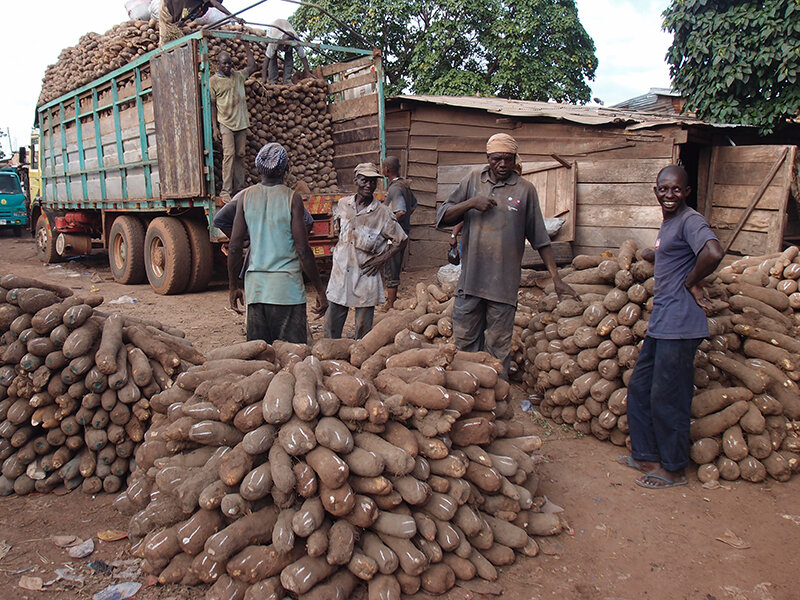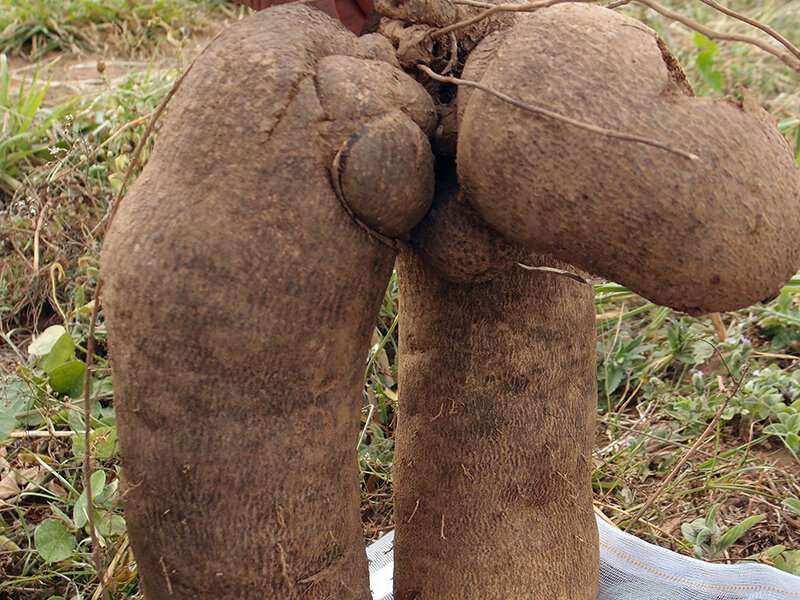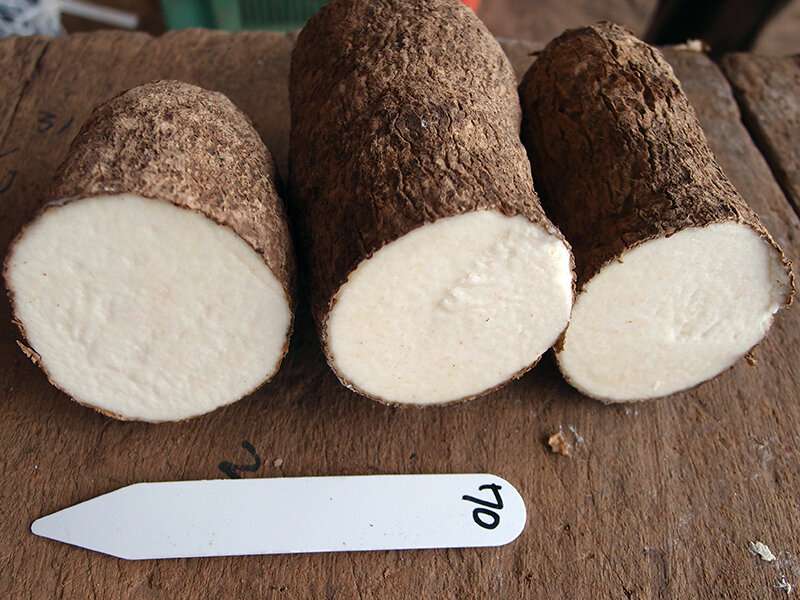#Cataloguing genetic information about yams

“#Cataloguing genetic information about yams”

Yams are a staple food in West Africa, which produces over 90% of the world’s yams each year. Yams play a key role in the food security, economic income, and traditional culture for the region.
While they are commonly assumed to be the same as sweet potatoes in the U.S., yams are a completely different plant. The yam tubers are much starchier and drier compared to sweet potatoes. Yams are native to Africa and Asia, and most Americans have never had a true yam.
Even though yam is a staple crop for West Africa, there has been limited research to improve the genetic diversity or productivity.
Researcher Shinsuke Yamanaka focuses on improving crop breeding resources for yams. His research was recently published in Crop Science, a journal from the Crop Science Society of America.
The goal of Yamanaka’s research was to increase the knowledge about the genetic information within yams—to help with future endeavors of breeding more varieties. Presently, there is little information for breeders to rely on—so Yamanaka is creating a type of “library” of information for future yam breeders.
There are more than 600 species of yams. The research team focused on the white Guinea yam because of its economic importance.
Farmers in tropical and sub-tropical Africa rely on yams to make a living. But yams are not an easy crop to grow.

Yams can take up to 11 months to grow before harvest. Also, the male and female flowers grow on different plants, so it is hard to time pollination correctly for a successful breeding.
“The long growth cycle, inconsistency in flowering between plants, and polyploidy are major limitations of the yam breeding study,” explains Yamanaka.
In addition to improving those characteristics, breeding new varieties can increase the crop yield, improve cooking properties, and decrease harvesting time. These would be beneficial for farmers.
When scientists breed crops, it can take several years to identify which plants have the best traits to be used as parents. Once the parent plants are chosen, the breeding process can continue as the plants are cross pollinated to create new, improved offspring.
Previous research has focused to collect and characterize genetic material from countries in the “yam belt” of West Africa. But maintaining this large collection is a challenge. Researchers wanted to better understand the physical and genetic variations of plants in the collection.
To do this, researchers used molecular markers. Molecular markers are segments of DNA that correspond with certain plant characteristics. This helps researchers predict what the plant will be like based on DNA instead of growing and observing the plant.
The team used plant material from over 400 yam plants, and DNA was extracted for analysis.

Researchers were able to reduce the size of the collection by eliminating plants that were genetically similar or not unique. A total of 100 yam plants were found to be unique, which will make up the new smaller collection.
Important agronomic traits were recorded about each plant in the new collection. These traits included the number of stems per plant, the growth period, number of tubers per plant, yield, and tuber weight.
In breeding terms, this is a “mini-core collection.” Similar collections are available for rice, millet and palm, among other crops.
This smaller collection will be much easier to maintain and gather information from. And creating new, preferable types of yams will help African farmers.
Breeding better crops takes time. This collection of genetic resources will help scientists save time as they evaluate and select which plants to use for breeding.
“Although our research is just the beginning of better utilization of the wide genetic diversity in yam, we hope our research will pave the way to improve yam breeding for farmers,” says Yamanaka.
Crowning the ‘King of the Crops’: Sequencing the white Guinea yam genome
Babil Pachakkil et al, Simple sequence repeat‐based mini‐core collection for white Guinea yam ( Dioscorea rotundata ) germplasm, Crop Science (2020). DOI: 10.1002/csc2.20431
Citation:
Cataloguing genetic information about yams (2021, February 10)
retrieved 10 February 2021
from https://phys.org/news/2021-02-cataloguing-genetic-yams.html
This document is subject to copyright. Apart from any fair dealing for the purpose of private study or research, no
part may be reproduced without the written permission. The content is provided for information purposes only.
If you liked the article, do not forget to share it with your friends. Follow us on Google News too, click on the star and choose us from your favorites.
For forums sites go to Forum.BuradaBiliyorum.Com
If you want to read more Like this articles, you can visit our Science category.


